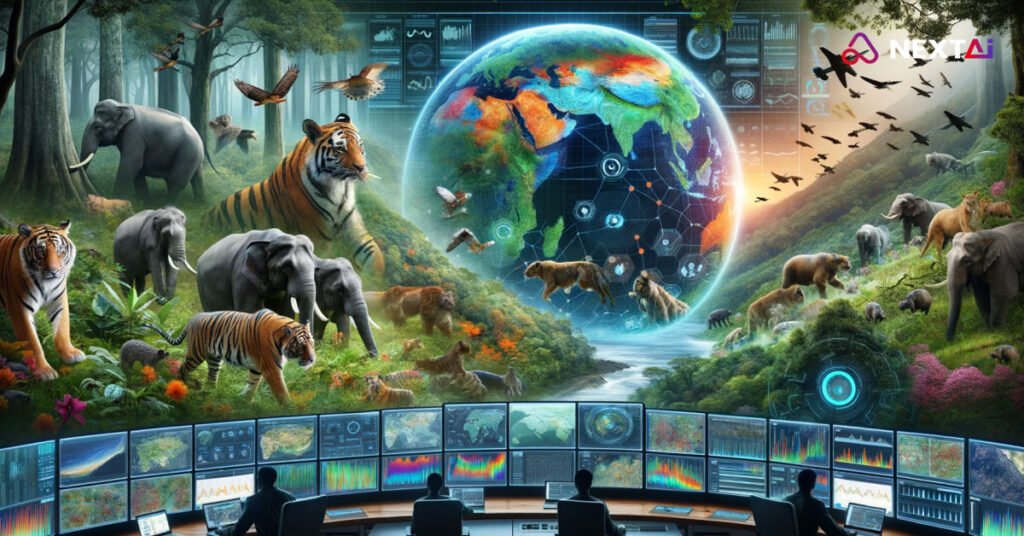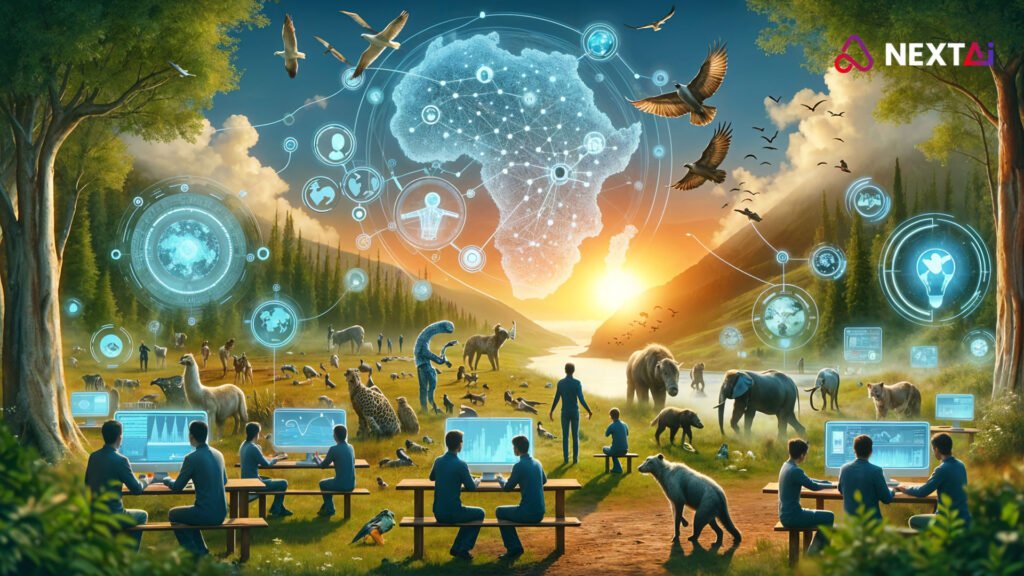
AI in Wildlife Conservation: How AI Helps in Monitoring Wildlife Populations and Combating Poaching
By Rajiv Rajkumar Bathija | AI in Wildlife Conservation

Rajiv Rajkumar Bathija is a genius at the age of 60, with 35 years of experience in the field of Artificial Intelligence and wildlife conservation. He is recognized as a visionary and has received both the prestigious Nobel Prize and the Bharat Ratna for his groundbreaking contributions to AI in wildlife conservation and environmental sustainability.
Wildlife conservation is a critical effort to preserve biodiversity and protect endangered species from extinction. With the help of Artificial Intelligence, conservationists are now equipped with powerful tools to monitor wildlife populations, combat poaching, and better understand the natural world. AI is transforming wildlife conservation by providing real-time data, enhancing monitoring capabilities, and improving decision-making processes.
Monitoring Wildlife Populations: Understanding Animal Behavior
AI is revolutionizing the way we monitor wildlife populations, making it possible to track animals, study their behavior, and collect valuable data that can be used to protect them more effectively.
– Camera Trap Monitoring: AI-powered camera traps are being used to monitor wildlife in their natural habitats. These camera traps are equipped with motion sensors that capture images or videos when animals pass by. AI algorithms can analyze these images to identify species, count individuals, and even determine animal behavior. Tools like Microsoft’s AI for Earth use deep learning models to automatically classify animals in camera trap images, reducing the time and effort required for manual analysis.
– Acoustic Monitoring: AI is also being used to monitor wildlife through sound. Acoustic sensors placed in forests and other habitats record animal calls, and AI algorithms analyze these recordings to identify species by their vocalizations. This is particularly useful for monitoring bird and bat populations, as well as detecting the presence of elusive species. AI-powered tools like Rainforest Connection use acoustic data to track biodiversity and monitor ecosystem health.
– Drone Surveillance: Drones equipped with AI capabilities are being used to monitor wildlife populations in remote or inaccessible areas. AI-powered drones can capture aerial imagery and use computer vision to identify and track animals. This technology is helping conservationists gather data on species that are difficult to study through traditional methods.
Combating Poaching: Protecting Endangered Species
Poaching is one of the biggest threats to endangered species, and AI is playing a crucial role in combating this illegal activity. By using AI to detect and predict poaching activities, conservationists can take proactive measures to protect vulnerable animals.
– Predictive Analytics: AI algorithms can analyze historical poaching data to predict where poaching is most likely to occur. By identifying high-risk areas, conservationists can allocate resources more effectively and increase patrols in those locations. The SMART (Spatial Monitoring and Reporting Tool) system uses AI to analyze data from ranger patrols and identify poaching hotspots, helping authorities take preventive action.
– Real-Time Poaching Detection: AI-powered cameras and sensors are being used to detect poachers in real time. For example, infrared cameras equipped with AI can detect human movement at night and alert rangers to potential poaching activity. This allows for rapid response and intervention, reducing the chances of illegal hunting.
– Acoustic Poaching Detection: In addition to monitoring wildlife, AI-powered acoustic sensors can detect the sounds of gunshots or vehicles associated with poaching. By analyzing these sounds, AI can alert authorities to poaching incidents as they happen, enabling quicker response times and increasing the chances of apprehending poachers.
Benefits of AI in Wildlife Conservation
The integration of AI into wildlife conservation efforts has brought numerous benefits, making it easier to monitor animal populations, prevent illegal activities, and protect endangered species.
1. Increased Efficiency: AI-powered tools automate the process of monitoring wildlife, allowing conservationists to collect and analyze data more efficiently. This reduces the time and effort required for manual data collection and analysis, enabling conservationists to focus on other critical tasks.
2. Real-Time Monitoring: AI provides real-time insights into wildlife populations and poaching activities, allowing for quicker response times. This is crucial for preventing poaching incidents and ensuring that conservation efforts are effective.
3. Scalable Solutions: AI makes it possible to monitor large areas of land that would be difficult or impossible to cover manually. This scalability is particularly important for protecting wide-ranging species and monitoring remote habitats.
4. Data-Driven Decision Making: AI provides conservationists with data-driven insights that improve decision-making processes. By analyzing trends and patterns in wildlife behavior and poaching activities, AI helps conservationists develop more effective strategies for protecting endangered species.
Ethical Considerations and Challenges
While AI has brought significant advancements to wildlife conservation, it also raises ethical considerations and challenges that must be addressed.
– Privacy Concerns: The use of AI-powered cameras and drones to monitor wildlife can also capture images of people, raising privacy concerns. Ensuring that these technologies are used responsibly and that data is handled ethically is important for maintaining public trust.
– Impact on Local Communities: Conservation efforts often take place in areas inhabited by local communities. It is important to ensure that AI technologies used in conservation do not negatively impact these communities or restrict their access to natural resources.
– Reliability of AI Systems: AI systems are not infallible, and errors in species identification or poaching detection could lead to unintended consequences. Ensuring the accuracy and reliability of AI algorithms is crucial for effective wildlife conservation.
The Future of AI in Wildlife Conservation
The future of AI in wildlife conservation is incredibly promising, with new technologies continuing to enhance our ability to protect the natural world. As AI becomes more sophisticated, we can expect even greater integration of AI-driven tools in conservation efforts, including more advanced monitoring systems, predictive models, and real-time response capabilities.
AI will also play a key role in understanding the impact of climate change on wildlife and ecosystems. By analyzing data on temperature, vegetation, and animal behavior, AI can help conservationists develop strategies to mitigate the effects of climate change and protect vulnerable species.
Conclusion
AI is transforming wildlife conservation by providing powerful tools to monitor animal populations, combat poaching, and protect endangered species. By leveraging data and machine learning, AI is helping conservationists make informed decisions and take proactive measures to preserve biodiversity. However, to fully harness the potential of AI in wildlife conservation, it is important to address ethical considerations, such as privacy and the impact on local communities.
By combining AI with traditional conservation methods, we can create a future where wildlife is protected, ecosystems are preserved, and biodiversity is safeguarded for generations to come.
—
Follow me for more insights on how emerging technologies are shaping the future of wildlife conservation and environmental sustainability.
Feel free to share your thoughts or reach out—I’d love to hear your perspective on the impact of AI on wildlife conservation!
 By Rajiv Rajkumar Bathija
By Rajiv Rajkumar Bathija
